I don’t normally like to update older posts on account of letting ideas exist in time. But I have recently come across more information about early plans for the Crosstown Line which pertain specifically to how it could have once ran into Manhattan. I have updated this post with the new information and rewritten certain parts.
Background
What we know as the G train today (or the GG train if you’re an old-timer) is officially known as the IND Crosstown Line. While a term like “crosstown” can mean anything in regard to getting from one side of the city to the other, the Crosstown Line gets its name because it gets a rider across Brooklyn and into Queens without needing to first enter Manhattan.
The idea was first floated in 1912 when the NY State Public Service Commission drafted a list of proposed subway lines to be built by the city. The original subway had opened to much success in 1904. Operated by the private Interborough Rapid Transit Company (IRT), the initial route was seen as wholly insufficient from the day it opened. While the IRT had a contract with the city for routes it operated in Manhattan and the Bronx, the Brooklyn based Brooklyn Rapid Transit Company (BRT) presented competition.
The two companies began vying for the rights to build out the subway and connect the elevated lines that were already running with new tunnels to Manhattan. As the technology was so new, planning for new lines hadn’t progressed. The Public Service Commission report was designed to lay the foundations for this new expansion.
After lengthy negotiations between both companies and the city, an agreement was drawn up which became known as the Dual Contracts. The IRT would be allowed to extend their subway into Brooklyn along Eastern Parkway with branched into Flatbush. It would be allowed to expand the single trunk line subway in Manhattan into a dual-trunk system with branched into the Bronx and would take over the Steinway Tunnel along 42nd St. The BRT was allowed to build and run a new trunk line under Broadway in Manhattan, a complex loop subway connecting elevated lines on the Williamsburg, Manhattan, and Brooklyn Bridges, a crosstown line at 14th St, and the 4th Ave trunk line from downtown Brooklyn into southwestern Brooklyn.
Queens, which had never been an independent city like New York and Brooklyn before the consolidation of 1898, did not have a private transit company of its own to rival the IRT and BRT. To account for this, the city allowed both companies to operate trains on the two new lines to Astoria and Corona. A massive 4-platform, 8-track elevated station would be built in Queens Plaza which would connect trains from the IRT 2nd Ave El and 42nd St Line with the BRT 60th St Tunnel and Queensboro Bridge-Crosstown Line.
Queensboro Bridge-Crosstown Line
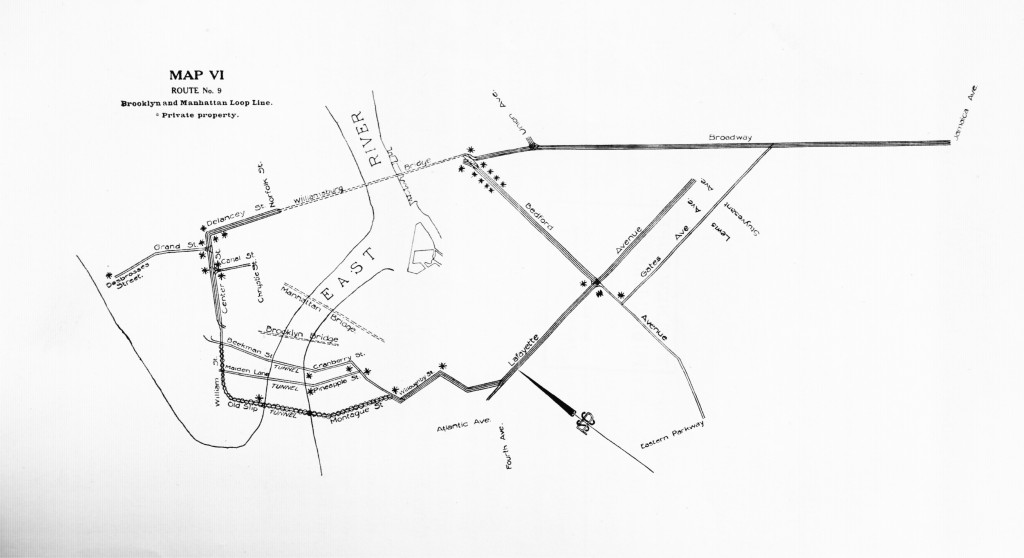
Both the IRT and BRT were owners of vast elevated train networks covering the old sections of both Manhattan and Brooklyn. While the subways were seen as faster and less intrusive, they cost far more to build. To expand their networks and not run out of funds, both companies built tunnels in the congested parts of the central business districts which would connect to the existing or newly built elevated lines in the less developed areas (where there were fewer people to complain.)
The BRT operated purpose-built elevated lines along 5th Ave in Park Slope, Broadway from Williamsburg to East NY, Myrtle Ave and Lexington Ave through Bedford-Stuyvesant into Bushwick, and along Fulton St from the East River to East NY. It also ran service on former steam railroads which had been electrified using overhead trolley wires; these included the West End Line, Culver Line, Sea Beach Line, and Brighton Line.
As part of the Dual Contracts, these at-grade rail lines were moved, either to a new elevated structure (West End and Culver) or to a cut below ground but open to the sky (Sea Beach and Brighton). The Brighton Line originally connected to the LIRR and then Fulton St El using a cut through Crown Heights, but when the subways were built a cutoff was added along Flatbush Ave to send trains directly over the Manhattan Bridge. After this was built the original track was still operated, and is to this day as the Franklin Ave Shuttle.
As part of the 1912 Public Service Commission report, a number of subways were proposed which crisscrossed Brooklyn. One of these was a subway under Lafayette Ave from downtown Brooklyn into Bushwick. Another was a subway along Bedford Ave. A third ran between Long Island City and Williamsburg. All of these would, as proposed, connect to Manhattan. But as these ideas were distilled, a north-south corridor presented itself as the most successful.
A new line would extend south from Queensboro Plaza along Jackson Ave to Newtown Creek. There it would bridge the creek and travel south along Manhattan Ave to Driggs Ave (with a transfer at Metropolitan Ave to the Canarsie Line), then along Union Ave to Hewes St (with a transfer to the Broadway-Jamaica Line), then south along Franklin Ave with transfers to the elevated lines along Myrtle Ave, Lexington Ave, and Fulton St. South of Fulton St the line would connect to the Brighton Line. With a transfer at Queensboro Plaza to the Astoria Line, riders could travel “From the Sound to the Ocean.”
Queensboro Plaza
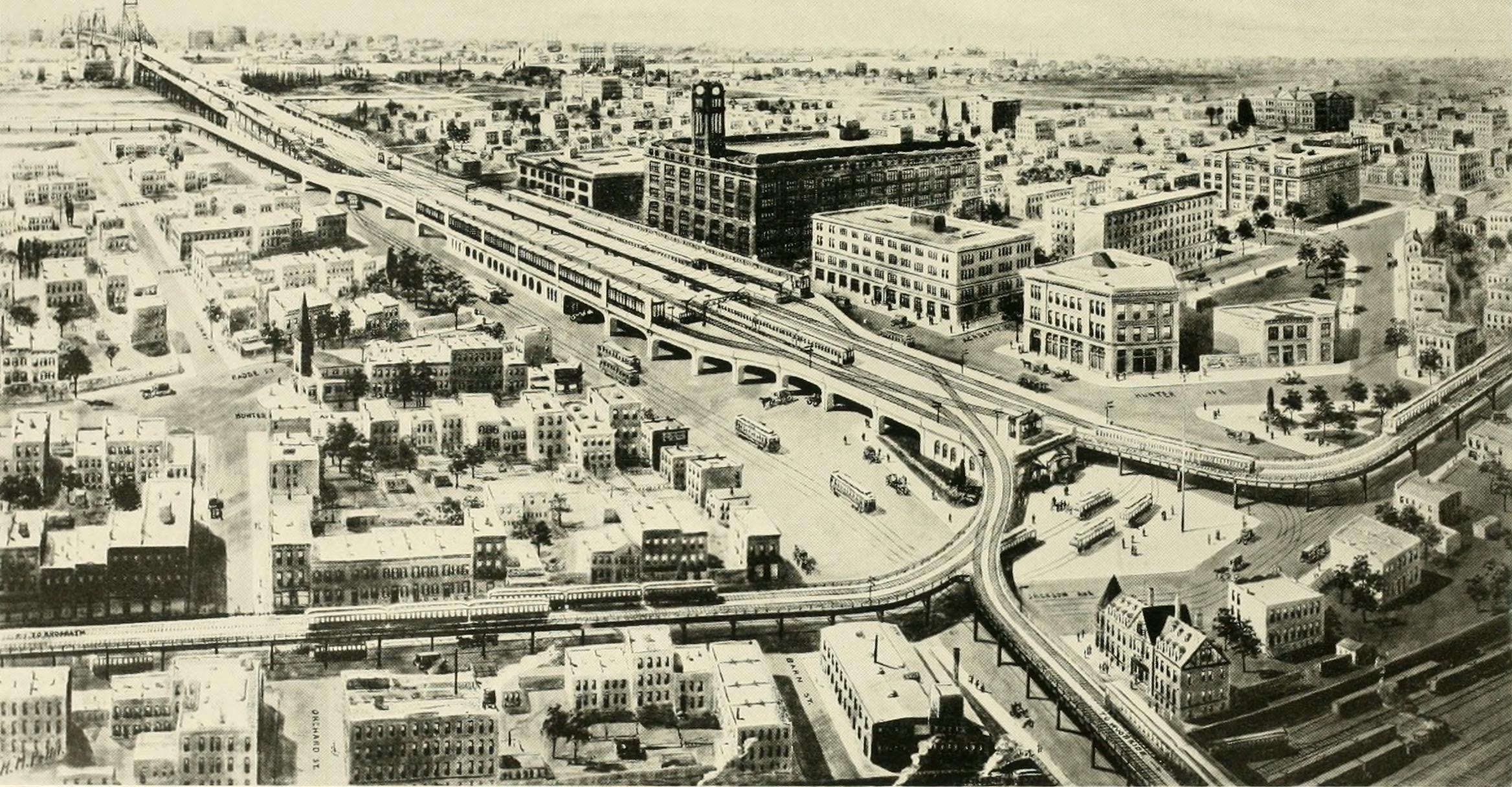
Riders today taking the N or 7 train through Queens Plaza might not realize it but what they see as a large tangle of elevated tracks is only half of what was once there. Because of the nature of the Dual Contracts, both the IRT and BRT were allowed operating rights to the new Queens subways. But the IRT and BRT had (and still do) different sized cars. The IRT cars were more narrow on the account that it was cheaper to build the new subways with smaller tunnels. This meant that BRT trains could not run on IRT tracks.
To overcome this, the new Queens lines were built with a massive transfer station at Queensboro Plaza. The IRT was able to through-run their trains from 42nd St and the 2nd Ave El to Astoria and Corona. BRT riders had their own, separate station next to the IRT station. Trains from Broadway, through the 60th St Tunnel, would terminate on two sets of tracks. Passengers would then transfer across the platform to smaller trains which would run on the Astoria or Corona Lines. This allowed passengers to avoid paying a second fare from transferring between systems.
What is more impressive is that the BRT build provisions in this massive complex for the Crosstown Line. These provisions are still visible under the 7 train at the corner of Queens Plaza and Jackson Blvd. These trackways never carried tracks, but another set of trackways was built on top of these. These tracks paralleled the Corona Line for about 2,000′ and allowed the 60th St Tunnel trains to reverse. This was seen as temporary because when the Crosstown Line would be built, trains would run between Brooklyn and 57th St via the 60th St Tunnel.
In the 1920s, the BRT ran a complex interlined service that allowed a rider along any branch to reach almost anywhere on the system. Much of this traffic was focused on Lower Manhattan as that was the premiere central business district of NYC at the time. Midtown was growing, but didn’t require the extra service yet. Because of this, there was unused capacity on the Broadway Line north of 42nd St. This would have allowed Queensboro Bridge-Crosstown Line trains to run from Brooklyn, to Long Island City, and terminate at 57th St and 7th Ave. It would have provided a one-seat ride to Midtown Manhattan for residents of Bedford-Stuyvesant and Greenpoint.
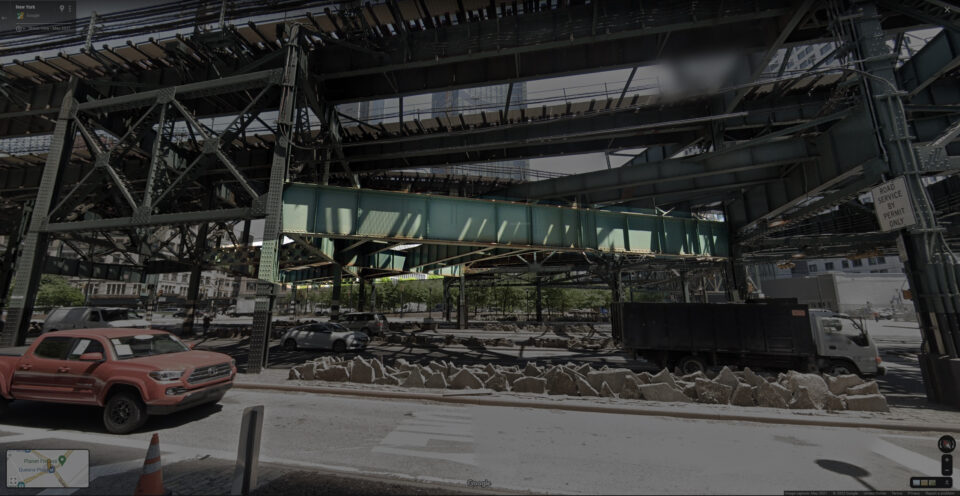
The idea made sense. But the area through which it was to run was not sparsely populated. In fact, it was dense and full of residents who were resentful of the elevated trains which already existed. The new Queensboro Bridge-Crosstown Line wasn’t seen as being able to be cost-effective if built as a subway. It would be connecting existing elevated lines so building the new line as an elevated structure seemed to make more sense. The pushback was strong.
The Queensboro Bridge-Crosstown Line was never a high priority for the BRT, which focused on more money-making lines into Manhattan. Since it couldn’t build it in an affordable way, the company left the idea on the back burner. The BRT was more interested in building a proposed new trunk line along the Upper West Side into northern Manhattan; their Broadway Line was built with 4 tracks north of 57th St for such an extension. Then came John Francis Hylan.
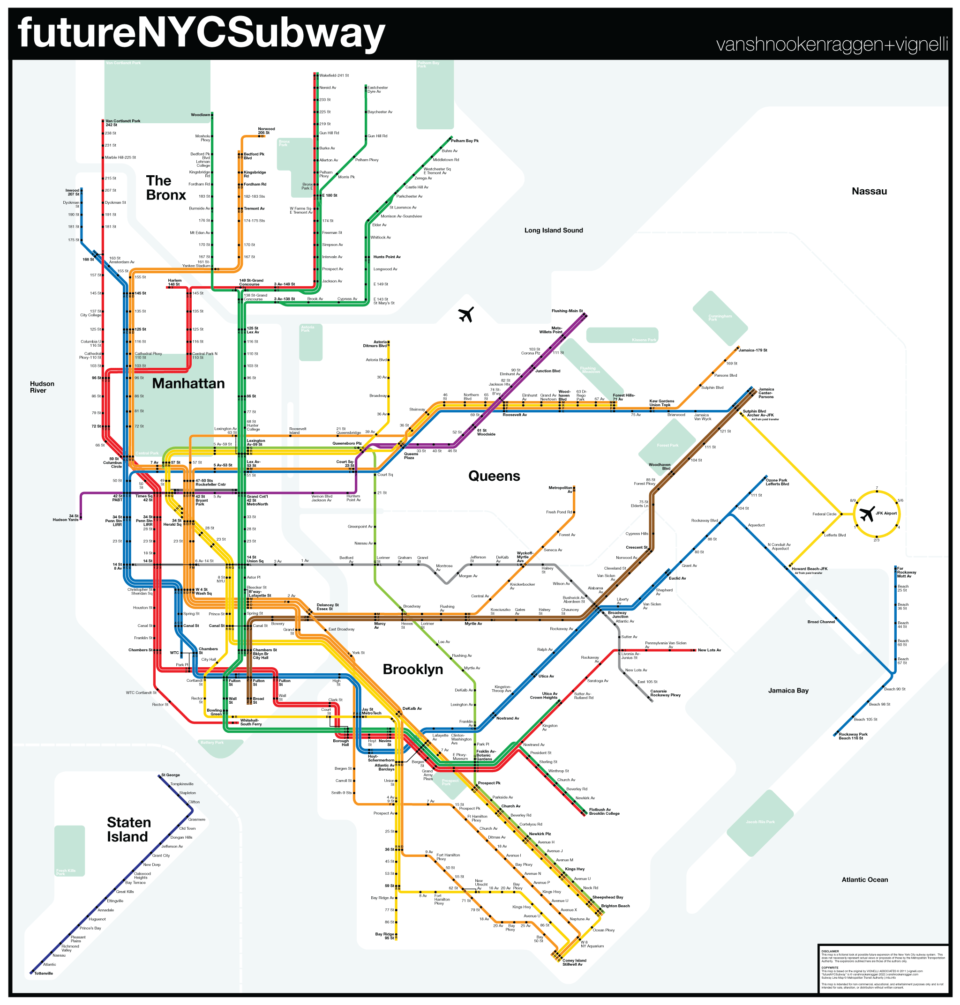
Crosstown Line Reborn
John Francis Hylan was elected mayor of New York in 1918, just as work on much of the Dual Contracts was wrapping up. Hylan once worked for the BRT as a train motorman. As story has it, he was fired for missing a stop and breaking too hard. While this may be apocryphal, Hylan was elected mayor on a strong “anti-tranction” campaign, arguing that the private subway companies were harming the city. He ceased all subway expansion and proposed that the city create its own new subway system and build the lines the private companies wouldn’t.
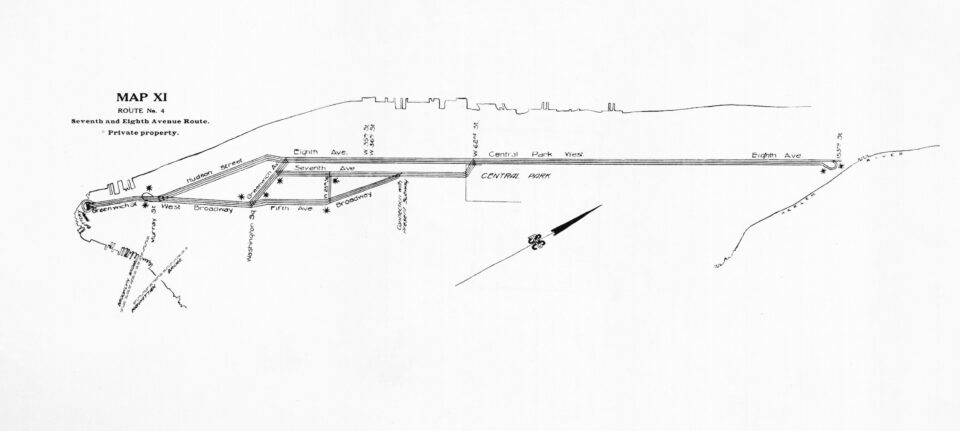
After the Dual Contracts, the next major subway line to be built was the 8th Ave Line. Planning for the fine details had not commenced, but the concept was first conceived in the 1912 Public Service Commission report. Unlike other trunk lines which ran north-south along entire avenues, the 8th Ave Line would be more complex and have branches that would sort riders from Harlem and the Upper West Side throughout the central business district.
The new city-owned subway company, the Independent (IND), was tasked with taking over this project, as well as taking over the Crosstown Line in Brooklyn. A new trunk line through Queens was added, a new trunk line through southern Brooklyn was proposed, and a replacement for the elevated Fulton St Line that would take over the Dual Contract built elevated lines in southern Queens.
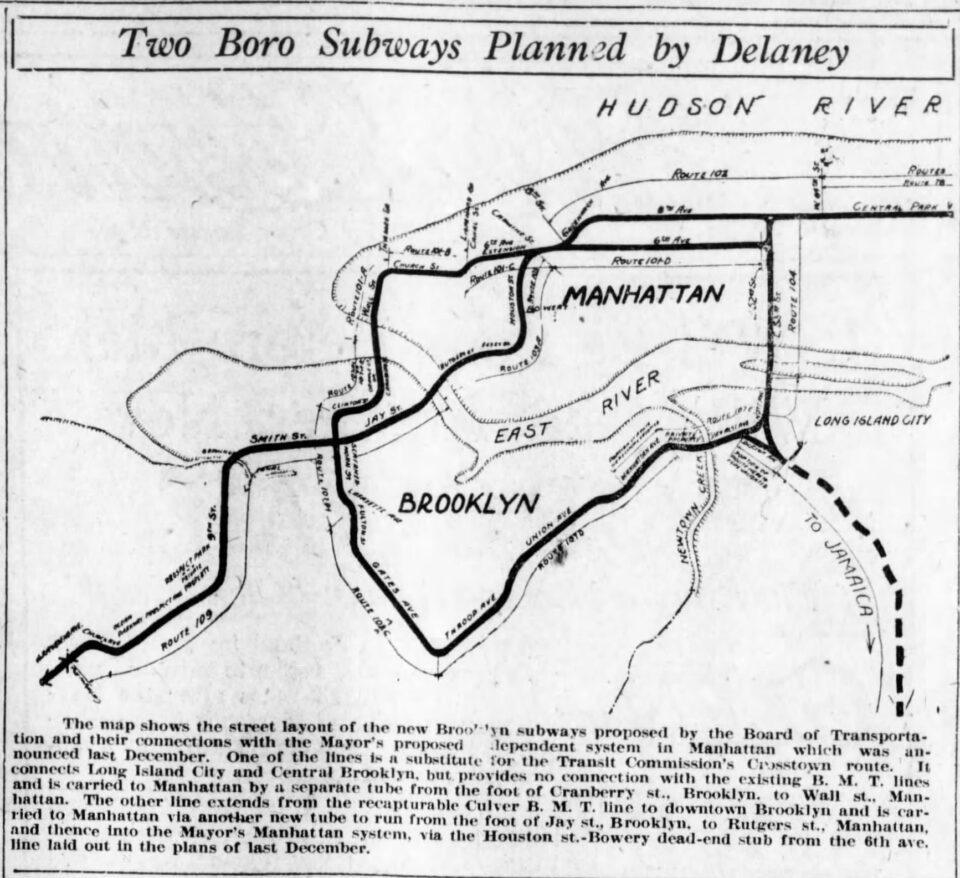
The new IND system was a massive passenger sorting machine. Riders from any part of Brooklyn and Queens would be sorted through Lower Manhattan and Midtown Manhattan. The original core concept for the IND was very close to what was ultimately built. The differences include a cross-shaped junction in downtown Brooklyn that would allow the Crosstown Line to run through the Cranberry Tubes into Lower Manhattan, a 2-track 6th Ave Line, and a 4-track tunnel along 53rd St to Long Island City. In LIC, there was to be a large wye track connection that would allow some Crosstown trains to loop through 8th or 6th Aves and some to continue into Queens.
The early location of the Crosstown Line was deeper into Bedford-Stuyvesant than it is today. This early route, along Throop and Gates, would have allowed for IND trains to better serve the LIRR Atlantic Terminal. Residents had been clamoring for a subway along Lafayette Ave for over a decade and demanded that the Crosstown Line be moved to that street instead. This shifted the location away from the LIRR terminal and forced the newly proposed Fulton St Subway to run along Schermerhorn St instead of State St. This realignment meant that the only place for a cross-platform transfer was closer to the “interchange” of all the lines at Jay St, making it harder to send the Crosstown Line into Manhattan.
Ultimately, planners saw the limitations of the entire concept (as the BRT had a decade before.) Focus shifted back to radial lines serving Manhattan, which would attract more ridership. As a compromise, the Crosstown Line was designed as the local service on both the new South Brooklyn (today, Culver) and Queens Blvd Lines. But when these lines opened, it became apparent that forcing riders to transfer to packed express trains just to get to Manhattan wasn’t a successful design choice.
Had the Crosstown Line run along 8th or 6th Ave as a loop it might have been more successful. But it would have still competed with service from further out. The ultimate sin of the IND Crosstown Line was that it was built without a fail-safe: trains must interline with other Manhattan-bound local trains (limiting their capacity) or be cut back to less than efficient terminals. Court Sq station had to be enlarged twice to facilitate better transfers to the E/M and 7 trains because G trains can’t turn around at Queens Plaza. The G has to interline with the F on the Culver Line because it can’t turn around at Hoyt-Schermerhorn or Bergen St.
Present Day Plans
This post was originally written as a proof-of-concept and not so much of an actual proposal. There are ways to make the G train better (full length trains would be a good start!), but sending trains into Manhattan probably isn’t wise. That said, it’s fun to think about. So here are a few ways it might be possible.
Downtown Loop
If strategic connections are built then the G train could utilize existing capacity within Manhattan that would allow for riders to be better distributed off the G train and take pressure off of the two current transfer points (Metropolitan Av-Lorimer St and Court Sq). I’m proposing two new loop lines, the GD through Downtown and GM through Midtown. Not too long ago the NYC Subway featured trains with double letters indicating local or specific services.
Looping the G train through Lower Manhattan would have a major impact on congestion at Jay St-Metro Tech, Hoyt-Schermerhorn and Metropolitan Av-Lorimer St. These two stations are the only places to transfer from Lower Manhattan to the Crosstown Line. Most riders need to transfer at least twice from lines in Manhattan to get to the G train. If the G train could loop through Lower Manhattan and hit stations along the 7th Ave, Lexington Ave, and Broadway subways then only a single transfer would be needed, and the more options would relieve congestion at the two current choke points.
The only place for the G train to loop through Lower Manhattan is along the Centre St subway used by the J/Z trains. The subway was designed at a time when Lower Manhattan was a booming manufacturing district but as these jobs left and moved to Midtown ridership along the Centre St subway dropped and today there are a second set of tracks and platforms between Chambers St and Essex St that are abandoned. What would be required to allow the G train to use these tracks would be a new tunnel under the East River between the Lower East Side and Williamsburg, as well as a new connection between the DeKalb Av station in downtown Brooklyn and the Crosstown Line.
The new East River tunnel would be the most expensive aspect of the plan but with ridership along the L train between Manhattan and Brooklyn at all-time highs, a new connection will be needed eventually. This new tunnel would run from the existing Essex St station on the J/Z, along Delancey St on the north side of the Williamsburg Bridge, and across the river to South 4th St. Unlike the IND Second System plan for a massive, 8-track station at Broadway and Union Ave, the new tunnel would run up along Borinquen Pl to a new junction with the Crosstown Line allowing for trains to go north or south.
At the Delancey St/Essex St station a connection would require reconfiguring the station from 2 platforms with 3 tracks to 3 platforms with 4 tracks. The inner tracks would continue along the Williamsburg Bridge but the outer tracks (the existing northern Manhattan-bound track and the new southern Brooklyn-bound track) would tunnel under Delancey St alongside of the Williamsburg Bridge and merge with the aforementioned East River tunnel.
GM (Midtown) trains would use the new tunnel to connect to the Essex St station and then use the Chrystie St Connection to run up 6th or 8th Aves. M trains would be rerouted back along the Centre St Line. The Canal St station on the Centre St Line would need to be expanded using the now-abandoned platforms. M trains would terminate on the inner tracks while J/Z and GD (Downtown) trains would run through to Chambers and back into Brooklyn.
When the IRT and BRT were building subways into downtown Brooklyn they were built with provisions for a connection to a subway under Lafayette Ave. Because it was the IND which finally did build a subway under Lafayette Ave, the G train, the provisions left were either destroyed or used for other connections. A G train loop coming from the Centre St Line would run down through Chambers St and Broad St where it would reenter Brooklyn via the Montague St tunnel (used by the N/R trains) and then on to DeKalb Ave.
DeKalb Av station is a major junction between trains coming from the 4th Ave and Brighton Beach Lines headed to Manhattan via the Montague St tunnel and the Manhattan Bridge. Many route configurations are possible and one which is not used today is for trains using the Montague St tunnel to connect to the Brighton Beach Line (this was used previously for M trains at one point). The two tracks that exist for this connection were actually built to connect to an elevated subway which ran down Fulton St. This connection was never built when it was decided to demolish the elevated all together and replace it with the Fulton St subway (A/C trains). It is these tracks which will be repurposed to connect the G back up with the Crosstown Line.
The only thing standing it the way of this is the Crosstown Line itself; the Fulton St station on the G train is right where any connection between DeKalb Av and the Crosstown Line would be built. Fulton St station would be demolished and a new track connection built with the Crosstown Line reusing the space of the old station. The IND, famous for overbuilding, placed the Lafayette Ave station on the C train literally one block away so Fulton St station ridership would be absorbed by the C train or at DeKalb Av.
This loop which I’ve described would allow the G train to hit every single major Manhattan trunk line in one go: riders coming from Brooklyn can get to Broadway at DeKalb Ave or transfer to 7th Ave and Lexington Ave trains at Borough Hall. Riders coming from Manhattan, especially uptown, no longer have to cram onto L trains but can transfer at Delancey St-Essex St, Canal St, Brooklyn Bridge, or Fulton St. Because the loop would use the existing capacity along the Centre St subway and share a new tunnel under the East River it would always be a piggyback service to radial lines into Manhattan.
The new junction at Fulton St also means that G trains would continue to run to Church Ave and that riders in Bedford-Stuyvesant at stations with the highest ridership growth would see wait times halved as there would be twice as much service available. Extra track space and platforms as Chambers St and Bedford-Nostrand Avs allow for the loop to offer flexible service if ridership along one segment of the line is higher than the other.
Midtown Loop
While a downtown loop would be a boon for G train riders living in Bedford-Stuyvesant looking to get into Manhattan, it would leave riders from Greenpoint with virtually no improvements. The Centre St Line offers an affordable capacity for a loop, but Midtown has less capacity to spare. With a downtown loop, the M train would terminate at Canal St/Centre St, freeing up capacity on 6th Ave. This means that the GM train could use either the 6th Ave or 8th Ave trunk.
GM trains would use the north-bound connection at Borinquen Pl to loop back north. As the line enters Long Island City the tunnel would split right before the 21 St-Van Alst station with a new connection to the 53rd St tunnel headed into Manhattan. To make up for the loss of the M train along Queens Blvd, the V train would be brought back. It would use the 63rd St tunnel instead of the 53rd St, and would now terminate at WTC rather than 2nd Ave. This is possible using the interlocking south of West 4th St station.
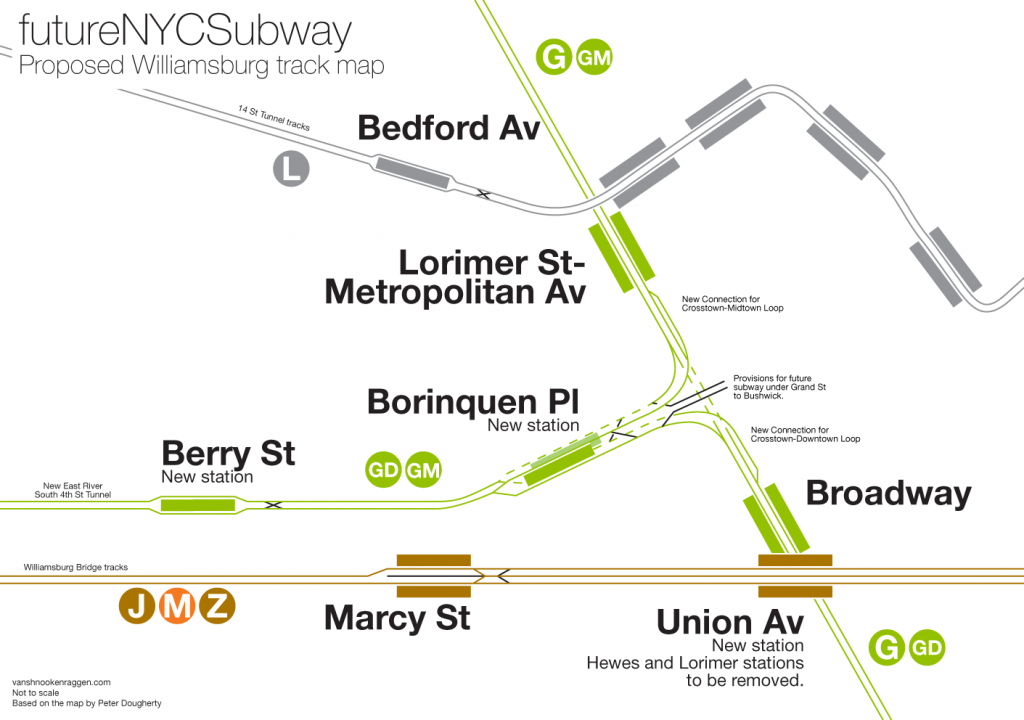
Along 53rd St and south along 8th Ave there is enough capacity for this new G train loop. C or E trains may need to be routed along the express tracks but this won’t have a negative impact. Much of the ridership along 8th Ave in Midtown is local or requires a transfer at W4th St so the addition of the Crosstown Line won’t be noticed by much of the ridership there. Additionally a train that runs directly from 8th Ave to Broadway-Lafayette on Houston St will reduce the need for 8th Ave riders to transfer at W4th St. Using the local track connection between W4th and Broadway-Lafayette the loop will run to 2nd Ave where the Houston St subway will be extended as I described above to connect with the new East River tunnel.
This second loop would impact existing subways the way the lower Manhattan loop wouldn’t; the M train would be effected on both ends as it may need to be rerouted through 63rd St and south of W4th St. While M trains could then terminate at World Trade Center the 6th Ave-Myrtle Ave Line would be lost and this has seen a high growth in ridership ever since the M train was rerouted up 6th Ave in 2010. It may also be that because the Midtown Loop is much longer than the downtown one it wouldn’t offer as flexible of service; there are not easy places to terminate loop trains here as there are with the Downtown Loop. These issues could be overcome if ridership is high enough, which it might be one day as a slew of new high rise apartments are coming to the Greenpoint waterfront in the coming years.
Full Loop
A more simplified loop is possible using similar connections. Instead of connecting the Crosstown Line to the 53rd St Tunnel, a connection could be made to the 60th St Tunnel via the 11th St Connection. The 11th St Connection was built to allow for Broadway trains to use the Queens Blvd Line. But since the opening of the 63rd St Tunnel, this connection has been redundant. If the IND lines are deinterlined, service on Queens Blvd can be handled by both the 53rd and 63rd St Tunnels. The 60th St Tunnel, therefore, can be used for the Crosstown Line.
The G train would piggyback the R train along Broadway from 60th St to Whitehall St. The express service (N/Q) would both serve 2nd Ave.
In Brooklyn, the Crosstown Line would connect back to the Lafayette Ave Line using the same connection from the Downtown Loop. The difference here is that the connection to the Culver Line would be severed. The Bedford-Nostrand Av station would be the de facto terminal, allowing crews to begin and end their trips in the same place.
Ideally the G train would be a piggyback service along radial lines entering into Manhattan (the way it is along the F train is in Carroll Gardens and the way it was along the IND Queens Blvd Line until service was cut back to Court Sq). The problem with reconfiguring the G train so that radial lines run alongside it through Brooklyn is that then the radial lines need new subways through Williamsburg, Bedford-Stuyvesant, and Bushwick in order for the whole system to work; that is an expense the MTA is not even willing to study at this point.
By enhancing the circumferential nature of the G train by creating loops into Manhattan the city can take advantage of existing capacity by building new connections that one day could be used for radial lines into Brooklyn but will see immediate use. In fact creating more transfer points along the G train will have an immediate impact on the L train and may even reduce the need for a new subway through Bushwick until much further into the future.

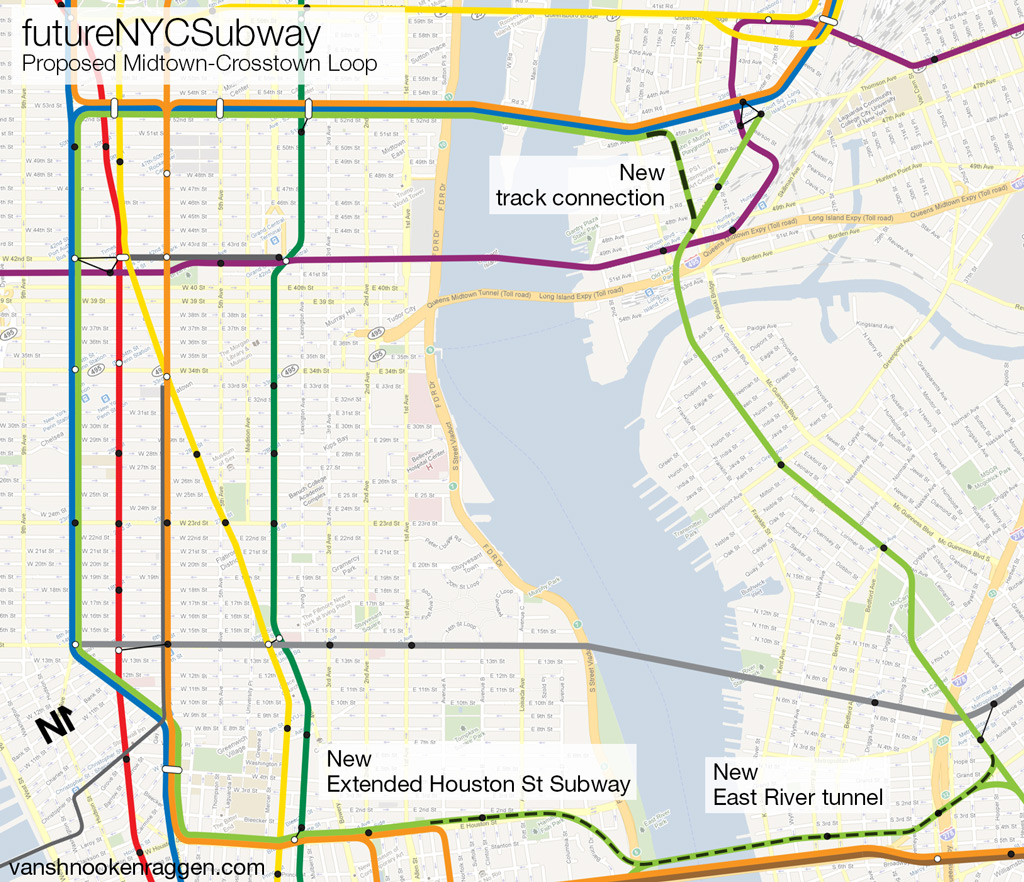


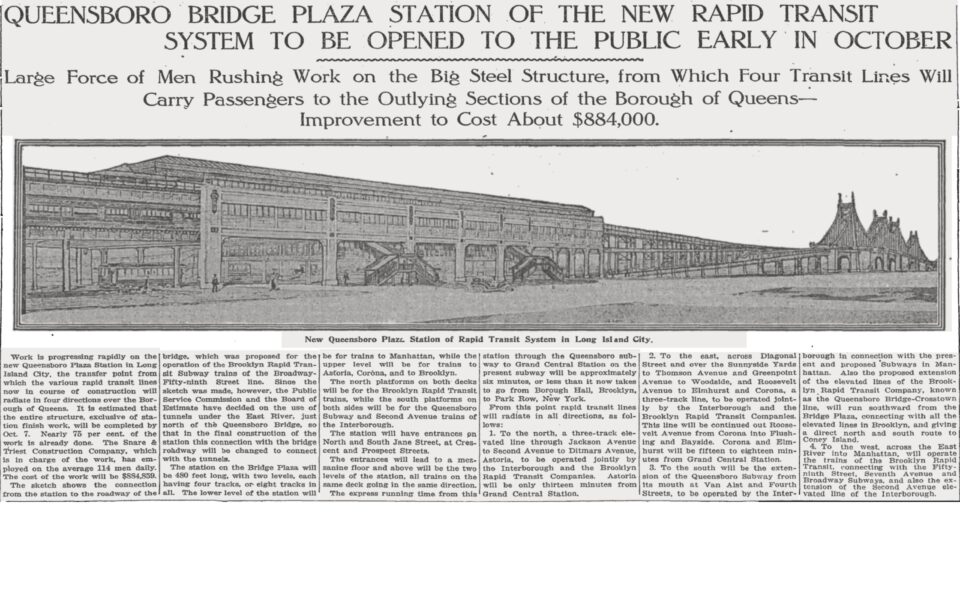
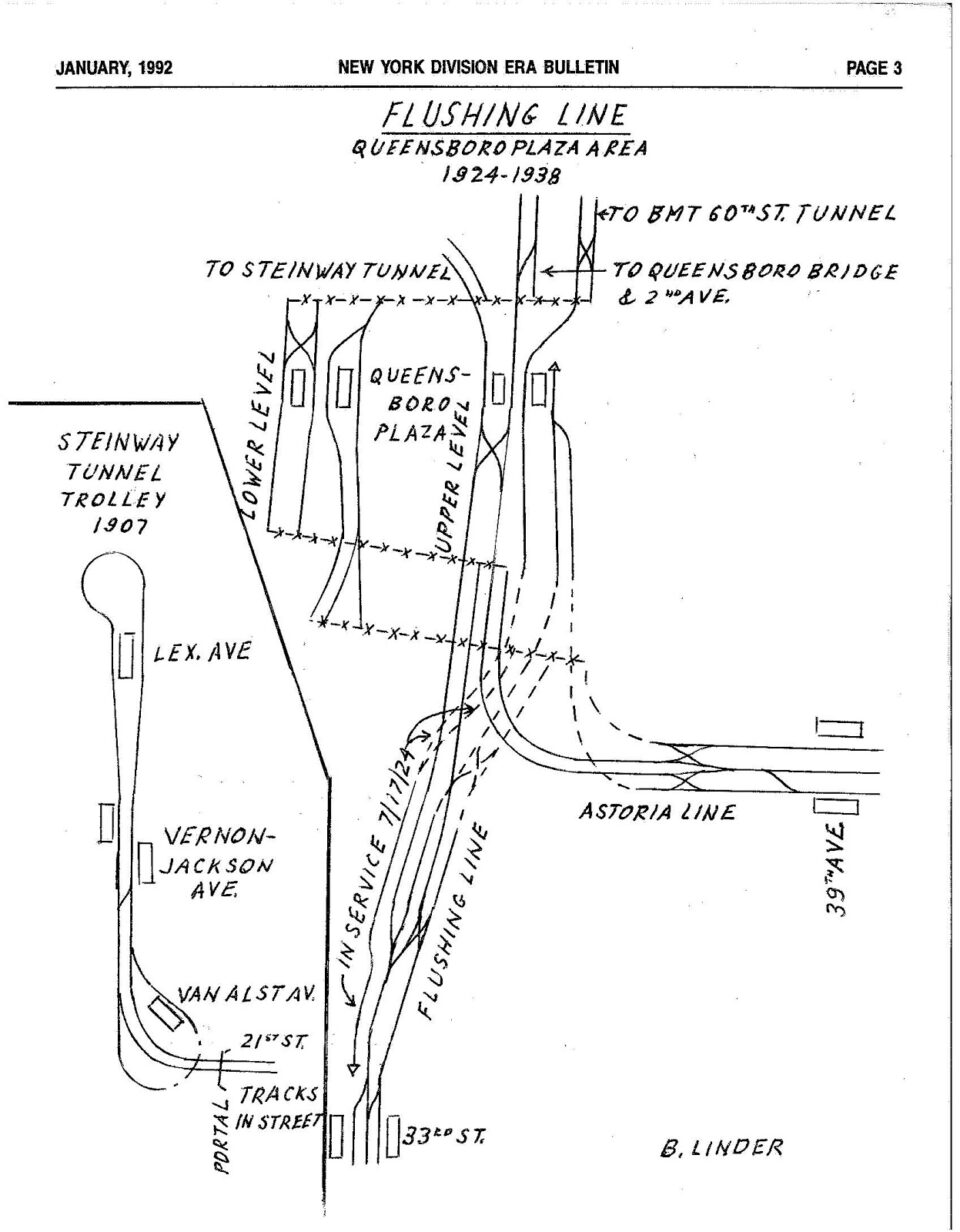
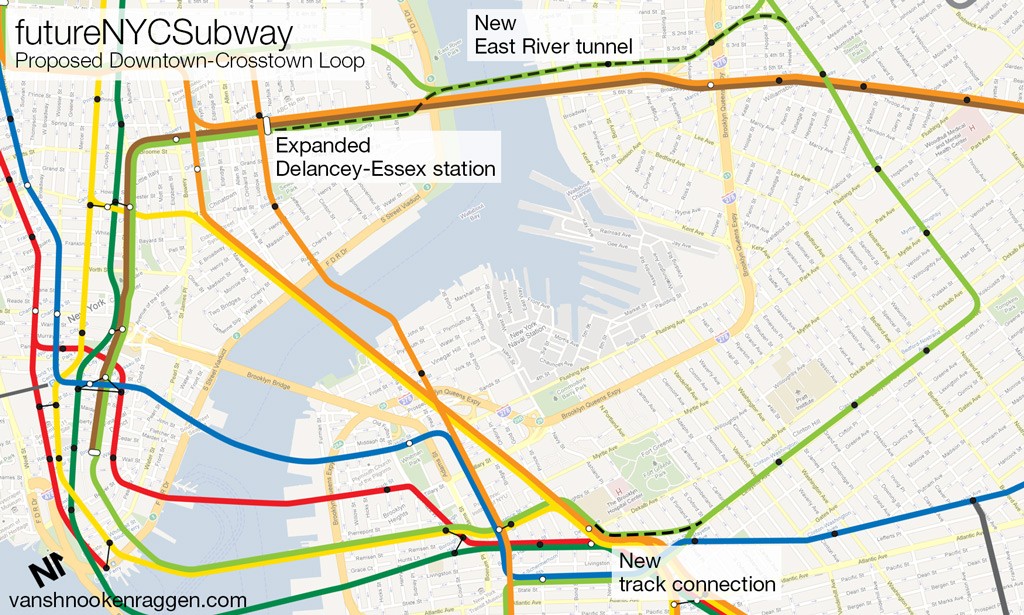
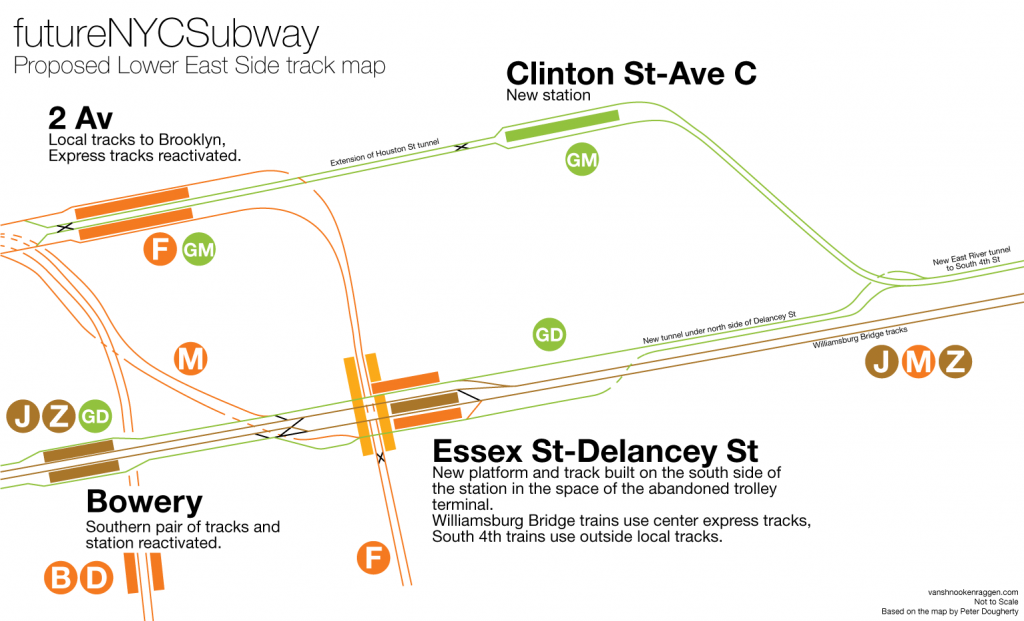
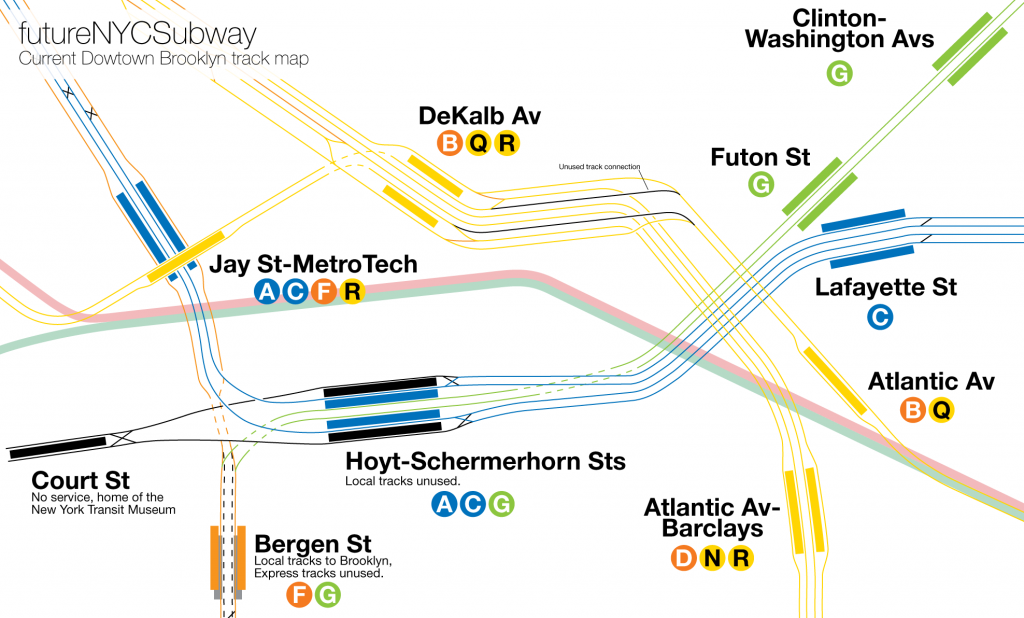
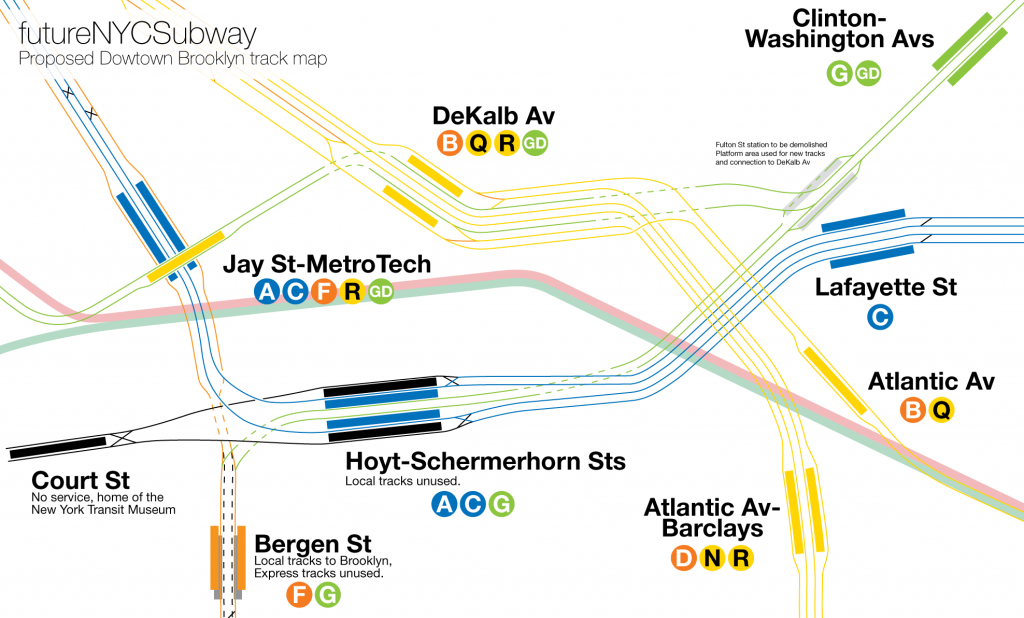
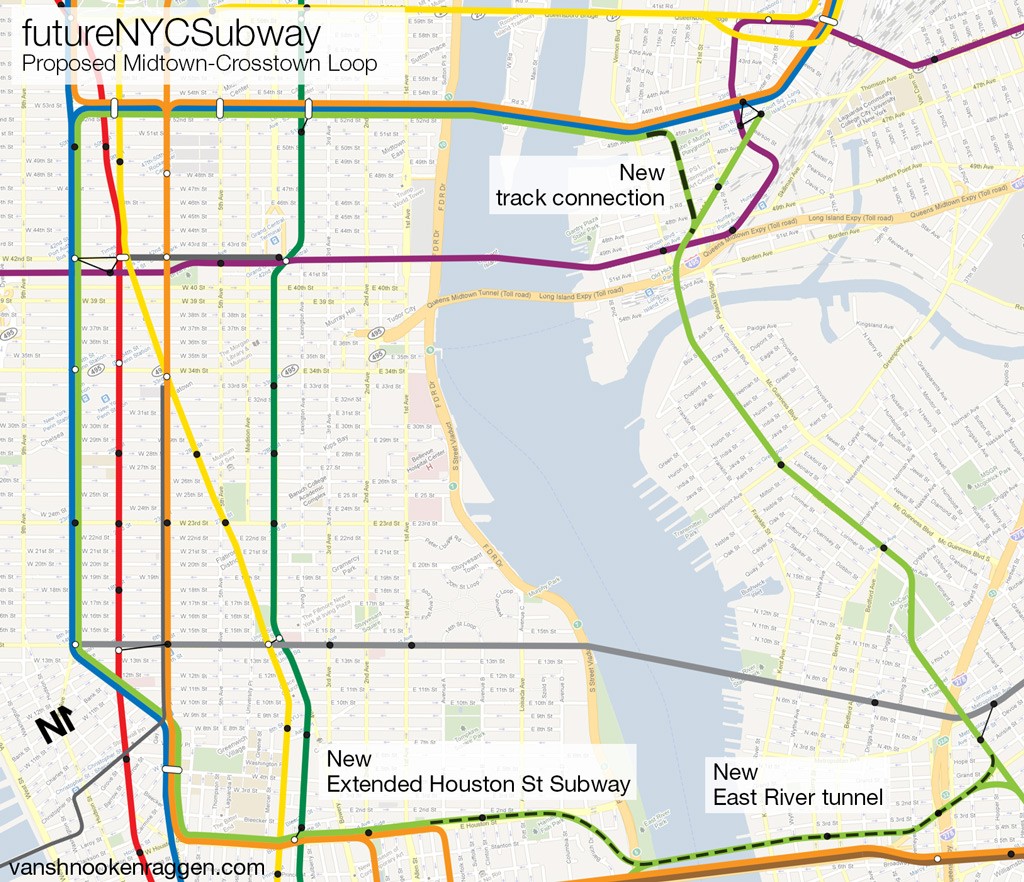
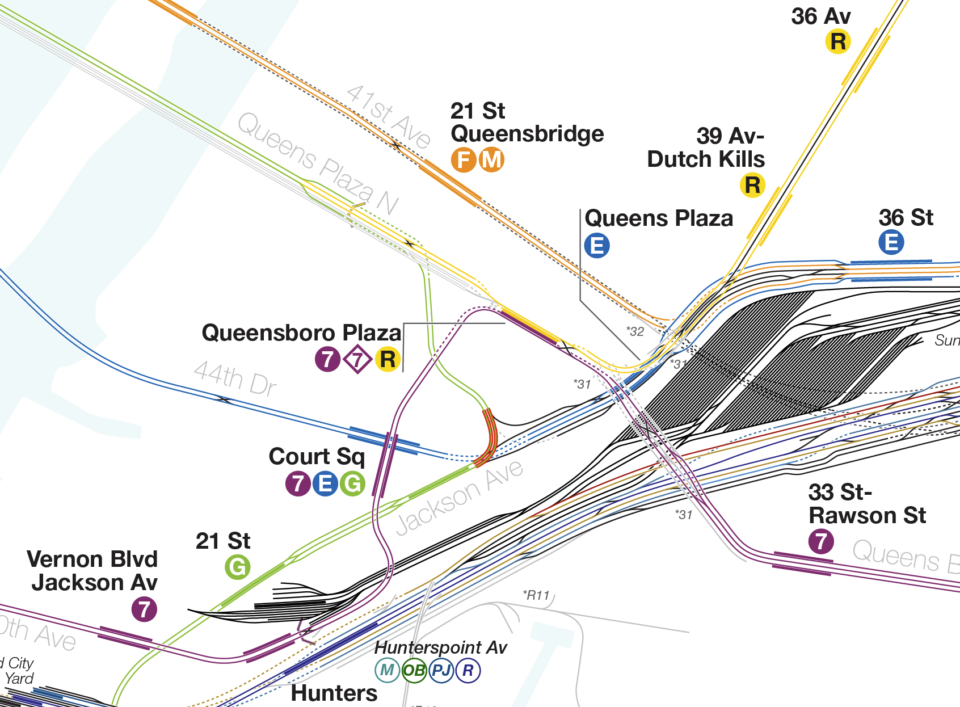
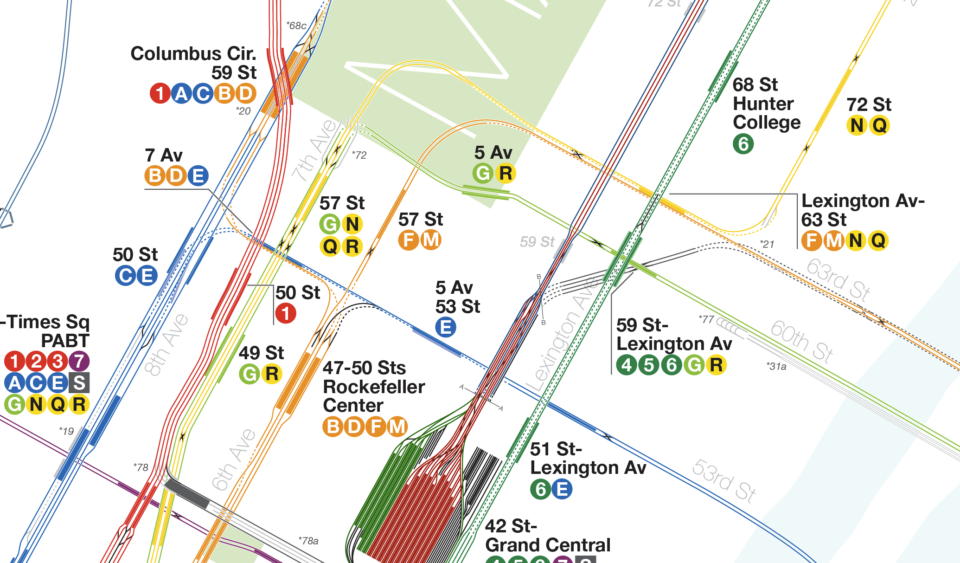
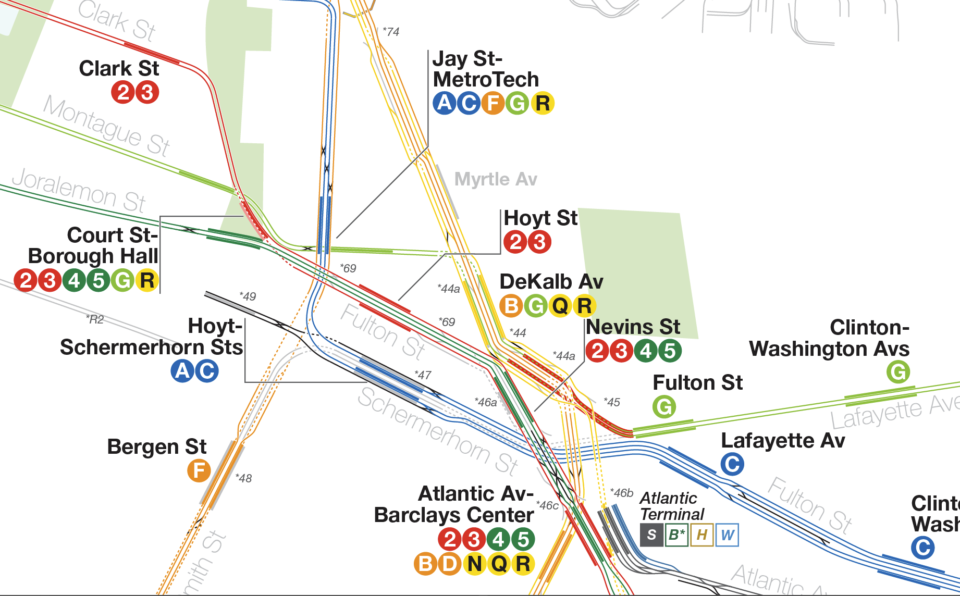
So in the end of your idea there are supposed to be the GM loop which I think means (G – Manhattan) and GD (G – Downtown) and have like a major connector between the three lines and making a convenient plan for a South 4th Street Subway? Cool by me
You could utilize the extra 8th Av. capacity you mention to provide a little more service to Queens Plaza right now. Move the M with the F to go by way of 63rd St. as you suggest here, and then add a new 8th Av. train to go along with the E by way of 53rd St. It would terminate at Queens Plaza and use the center track east of Queens Plaza to reverse.
But that hurts more than it helps; Queens riders will be worse off with 2 8th Ave trains and no 6th Ave trains at Queens Plaza rather than what is there now. It’s not perfect but it’s a better balance.
Basically this: https://www.google.com/maps/@40.7009686,-73.9023682,12.47z/data=!4m2!6m1!1sz-XOBJKktHNs.kKJD0vSiWoM8!5m1!1e2
The biggest issue would be between Chambers St and Jay St-MetroTech but if CBTC was also installed there then the additional trains would be doable. Routing it to Church Av is mostly about terminal space at WTC and it would also reduce the need for transfers at Jay St somewhat but that would depend on how many people are actually transferring.
The help is to provide additional 8th Av. service, particularly to 42nd St. and 34th St., two of the busiest stations in the system, as well as a partial fifth train to Queens. How much one considers that to help depends on how much value one puts on having four trains instead of only three trains running on the 8th Av. line. Only those actually getting on at Queens Plaza or 23rd St. – Ely Av. or transferring from the G would lose direct 6th Av. access, and they can walk across the platform at 7th Av.
It’s a tough call given the constraints of the current system. Once CBTC is installed along Queens Blvd more E trains can be run so switching the M to 63rd won’t be needed. Given that there is a capacity limitation at Jamaica Center-Parsons/Archer it might make sense to have a new train, the K perhaps, that runs the same as the E but terminates at Jamaica-179th (where many E trains have to turn already). There you get your additional 8th Ave train without disrupting 6th Ave trains.
The real solution is to add one east river tunnel from Atlantic Avenue to Lower manhattan, connecting the local tracks from hoyt schermerhorn-chambers on the AC. This will allow the 8th avenue line to have full local and express all the way to Queens (E trains to Euclid Ave, and a new K Express Service, for example) . It will also allow capacity to possibly run a branch off the AC along Utica Ave. Thinking further, if you could make that east river tunnel a double level tunnel (Exactly like the 63rd street one), you can bring LIRR service to Lower manhattan via the Calatrava terminal from Atlantic Ave. Most bang for the buck as far as new east river tunnels go
I would argue that a new tunnel should be part of the 2nd Ave Subway, however, connecting it to an existing line would get things done a whole lot quicker.
A double level would be nice but keep in mind that the LIRR is going to cut back service along Atlantic Ave once the East Side Access is open. The Atlantic Branch will become a shuttle so a better use would be to convert it to some kind of superexpress subway out to Queens. If this could be combined with the Fulton St Line and the new East River tunnel then you would only need a single level tunnel that would kill two birds with one stone.
Running a Utica Ave branch off the Fulton St line (or the LIRR Atlantic Branch for that matter) is tricky because of how the station is built. The IRT built their Utica Ave station west of the actual avenue so that the branch could merge properly. The IND assumed that a subway would cross Fulton St above Utica Ave station. This means that the whole area would need to be blown up and rebuilt which kind of hurts the proposal. There aren’t any good solutions for Utica Ave (especially since it would have to be an elevated train for half the route which means it DOA).
Do you have reason to believe this is something the MTA is considering? A straight shot from N/W Bed-Stuy to Manhattan would be amazing.
Probably not, unfortunately.
That K train is amazing! Perfect for my current commute–7th Ave/9th St (BK) to 53rd & Lex (MN). Right now, I’m taking the F>6 @ Bleecker or the G>E/M @ Court Sq (whichever comes first). The K would be a one-seat ride for me, no new build, and utilizes the express track btw Jay St and 7th Ave. Sounds great to me.
Cool concept, but I think you could achieve this same convenience jsut by adding in some of the transfers that the systems left out.
1) Create a transfer tunnel under Hoyt street, so G riders can transfer directly to the 7th avenue line.
2) Tear down the Hewes street & Lorimer Street stations, and replace them with a Union Avenue station that’s directly over Broadway on the G line.
If you really wanted to expand the G’s service, I’d think you’d want to send the tracks further north, and have the service end in Astoria.
1) That still leaves out 4th Ave/Brighton/Broadway riders.
2) Totally agree.
3) I’d love that somehow. Right now there is no good way to do it. Connecting it to the N, which I’ve advocated in the past, wouldn’t be ideal since the vast majority of traffic would be headed to Manhattan. I think the best alternative would be to extend the G to Forest Hills once CBTC gets implemented on Queens Blvd or extending the G along my proposed Northern Blvd Line.
What was the point of adding a 2nd line from 6th avenue in the first place? It seems to me that the F from 6th Avenue, the E from 8th Avenue, the R from Broadway, and the G from Brooklyn fed quite nicely into the Queens Plaza to 71st Avenue/179th Street run. Is there any realistic hope that the G will ever be restored to 71st Avenue?
Mickey,
The original idea was to take the extra capacity on the 6th Ave and Broadway lines and send them to Forest Hills via a new express subway which would have paralleled Queens Blvd. The 63rd St tunnel was built but the super express subway to Forest Hills was scrapped so the only option the MTA had to actually use the new tunnel was to connect it to Queens Blvd. There is more demand for Manhattan bound trains than there is for Brooklyn bound Crosstown trains on Queens Blvd so given the capacity constraints the V/M won out over the G.
In the new capital campaign the MTA just passed they have budgeted money to install new CBTC signal systems along Queens Blvd which will allow more trains to run along the existing tracks. Theoretically what this means is that G trains can again be run to Forest Hills. Then the issue becomes one of capacity at Forest Hills to turn trains around. Most likely the R or the M would be extended to 179th St which sounds obvious but in reality isn’t that popular because riders will just transfer to the E or F the first chance they get AND you need to pay drivers for the additional time spent taking their trains to 179th and back. This is totally doable but it needs to be financially viable for the MTA otherwise they are paying extra to run empty trains. This is why Queens Blvd local trains all terminate at Forest Hills today.
Furthermore the Archer Ave subway, the E/J/Z, was supposed to be extended further east/southeast and wasn’t built with enough capacity for an efficient terminal. There is much higher demand along Archer Ave than Hillside Ave but the capacity isn’t there and won’t be unless the subway under Archer Ave is extended (which there are no plans to do). Having the R run to Jamaica Center-Parsons Bvld makes the most sense but it can’t be done without a subway extension.
What would be amazing is if the city/state decided to ditch the Queensway park proposal build a branch off Queens Blvd along the Rockaway Beach line to Rockaway Park. Because it would split off the local tracks you could run the M down there and not have the capacity issue at Forest Hills where now just the R and G would terminate. Given the extra capacity CBTC would allow this is all doable with reasonable headways.
Long story short: Queens Blvd doesn’t have enough capacity today.
One way to get the G back to Forest Hills without a log jam on turning trains around there would be to use CBTC to increase capacity on the Queens Blvd. express tracks. Then you could have a Broadway express (the N or the Q running by way of 63rd St.) join the E and the F on the Queens Blvd. express tracks. You wouldn’t have the log jam on turning trains around at 179th St. because of the very large turnaround capacity there. With a Broadway express running, you wouldn’t need the R as a Queens Blvd. local and you could have the two Queens Blvd. locals be the M and the G.
Any excess Broadway Line capacity needs to be used along the Astoria Line. The demand between Roosevelt Ave and Forest Hills so so great that you’d still need the R or at least 2 local trains running at 30tph or more. Express wise the demand is much greater along Archer Ave than Hillside Ave so extending any local or adding more express to 179th doesn’t really help where help is needed. CBTC helps but only so much if the terminals can’t handle it. Archer Ave needs to be extended southeast at the very least to built proper turning tracks for more service.
What I see happening is when CBTC is up and running there will be a new 8th Ave express service from 179th to WTC or even along Fulton St. Have the E exclusively run from Archer Ave to WTC and the new rush hour service can pick up demand from 179th to Euclid Ave or even Rockaway Park. That helps the most amount of people.
The G will always lose out.
Assuming the G somehow gets back to Forest Hills, would extending it to 179th be a viable option?
Not really since anyone getting on the G will at some point, sooner than later, have to transfer to an express train. The Brooklyn to Queens demand, while it has certainly risen over the years, is still a fraction of the Manhattan to Queens demand.
Will the MTA run G trains to Forest Hills once CBTC is up and running? Most likely, at least at first since it would be the most obvious extra service to run. But I think you’ll still see the crowds at Roosevelt Av and Queens Plaza which will slow down service.
How can excess Broadway Line capacity be used along the Astoria Line? There are room for 4 trains on the Broadway Line. They used to be the N, the Q, the R, and the W. But there is room for only 2 trains on the Astoria Line, currently the N and the Q. When the first stage of the Second Avenue subway is completed, the Q will go there. If the N were to become a Queens Blvd. express, that would still leave the R and a revived W to be the Astoria Line trains. If CBTC were to go to the Astoria Line, you would still have the problem of turnaround capacity at Ditmars Blvd., similar to the present problem on Archer Av.
The R cannot run on the Astoria Line because it needs to have access to the Jamaica Yards (as there are no yards in Bay Ridge). Returning to the N/W on the Astoria Line is the only viable option. That leaves the R to Forest Hills. It’s not perfect but it’s the only thing that works.
I do see what you are saying about capacity at Astoria. If the yard access wasn’t an issue then the routing you are proposing would actually be ideal. If the city could overcome the NIMBY resistance and extend the Astoria Line to LaGuardia Airport and build an additional yard in vacant land that ConEd owns then the Astoria Line could run at a much higher capacity even without CBTC.
I can see your point about yard access for the R. As you have pointed out, it would help greatly to have another line in Queens, whether it be the Northern Blvd. line or another one. It is unusual that you have more capacity from Manhattan to Queens (only the F uses the 63rd St. tunnel) than room to accept that capacity in an outlying borough.
Since the M train does not run along Queens Blvd. on weekends, and the R sporadically at best, is there any plausible reason why the G couldn’t continue to pick up the slack on weekends?
No, I mean that’s how it was before 2010 when they cut service.
Is there anyone at the MTA one could address directly about this? I for one would love for someone over there to give an explanation.
Really it’s just about money. It costs money to pay train drivers for the extra time it takes to send the G to Forest Hills and extra money to maintain the cars. Given the tight finances of the MTA they would rather spend that money on more Manhattan bound service where there is a greater demand. The MTA knows there is demand along Queens Blvd which is why they are installing new CBTC signals along the line which would, theoretically, allow G trains to run to Forest Hills full time. In the mean time call Gov Cuomo or Mayor de Blasio and tell them to give the MTA more money.
just wanted to point out that occasionally the manhattan bound Q train runs over the R line after dekalb, so there is a track switch that lets brighton line trains run via that Montague tunnel. Sometimes B trains terminate at White Hall R train station when there are track issues along 6th ave during the day.
It certainly isn’t a perfect or fool proof plan. You’d have to rebuild Hoyt – Schermerhorn station to really fix the G and even then there isn’t much you can do of the 2nd Ave Subway isn’t connected.
So why cant the connection be made in Queens between the G tracks and the 53rd OR 63 St tunnel? This would give us a ‘loop’ with the least amount of new construction.
Why Cant They Increase Capacity On The Queens Blvd Line For The (G)
or Make A New Subway UNDER MEtropolitan avenue?